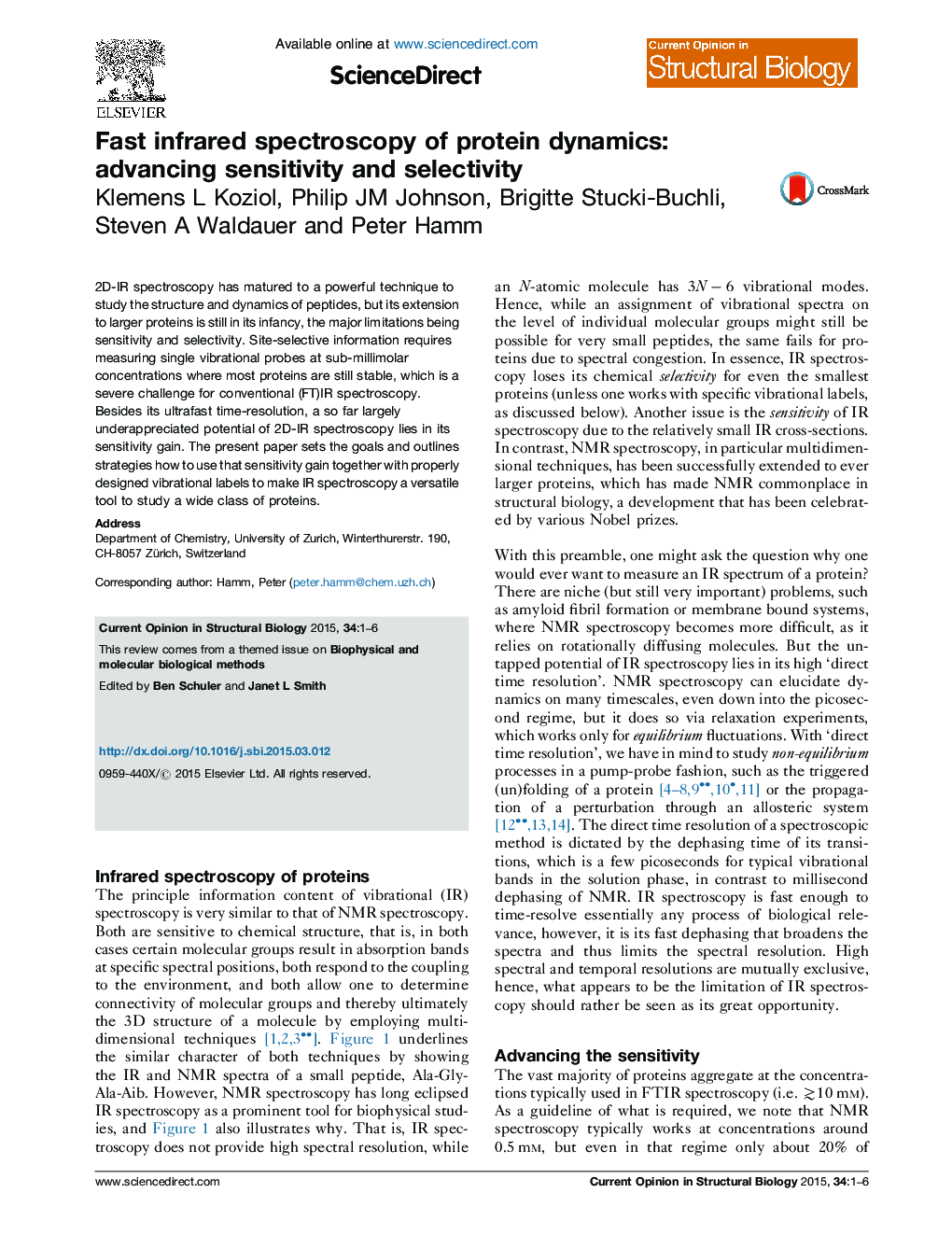| Article ID | Journal | Published Year | Pages | File Type |
|---|---|---|---|---|
| 8319873 | Current Opinion in Structural Biology | 2015 | 6 Pages |
Abstract
2D-IR spectroscopy has matured to a powerful technique to study the structure and dynamics of peptides, but its extension to larger proteins is still in its infancy, the major limitations being sensitivity and selectivity. Site-selective information requires measuring single vibrational probes at sub-millimolar concentrations where most proteins are still stable, which is a severe challenge for conventional (FT)IR spectroscopy. Besides its ultrafast time-resolution, a so far largely underappreciated potential of 2D-IR spectroscopy lies in its sensitivity gain. The present paper sets the goals and outlines strategies how to use that sensitivity gain together with properly designed vibrational labels to make IR spectroscopy a versatile tool to study a wide class of proteins.
Related Topics
Life Sciences
Biochemistry, Genetics and Molecular Biology
Biochemistry
Authors
Klemens L Koziol, Philip JM Johnson, Brigitte Stucki-Buchli, Steven A Waldauer, Peter Hamm,
